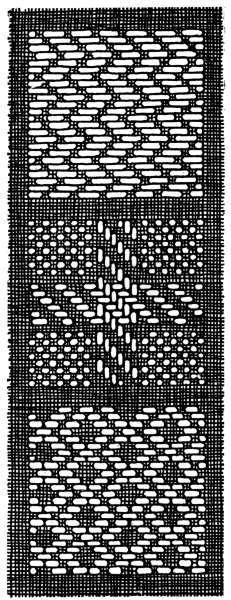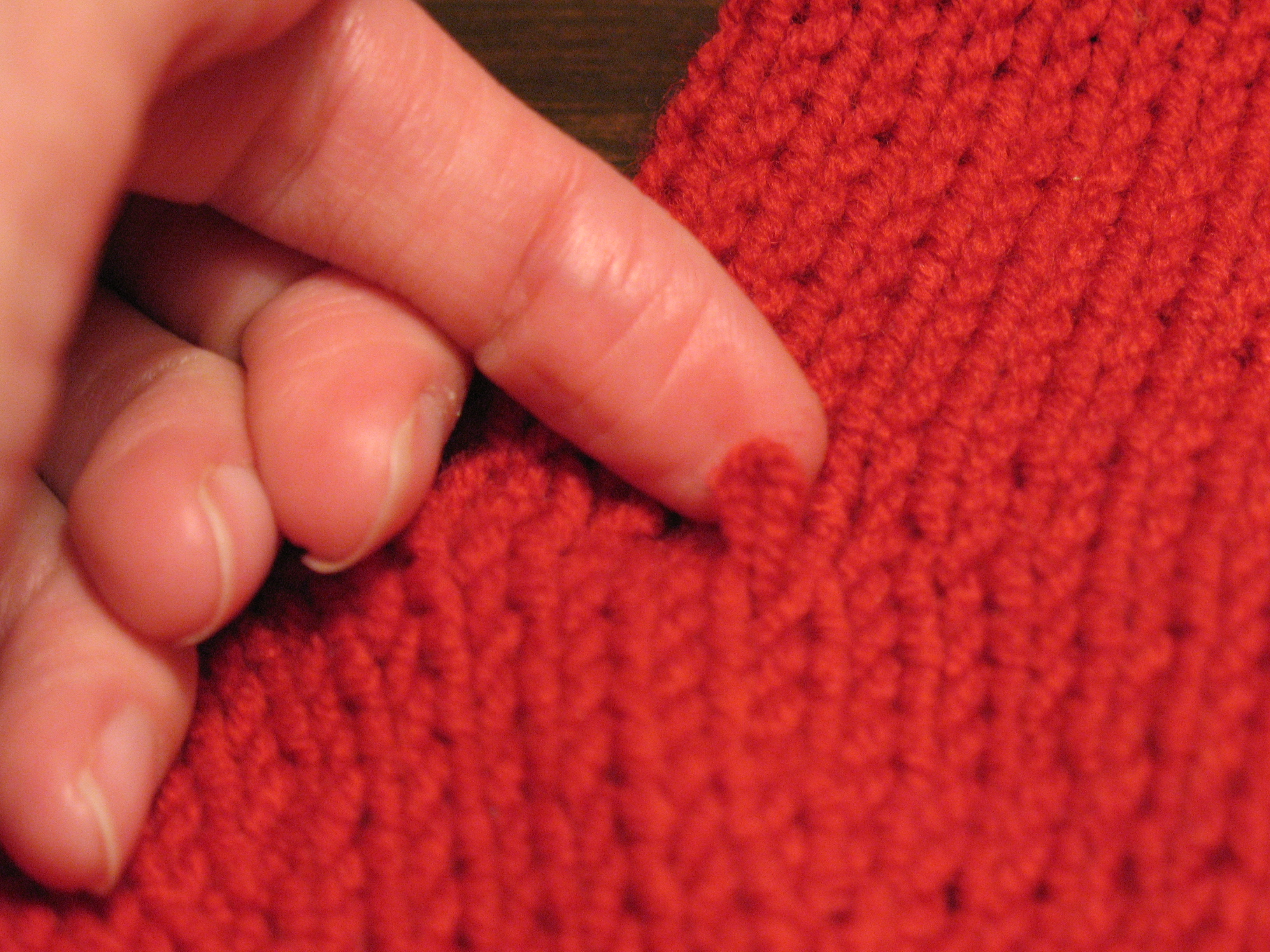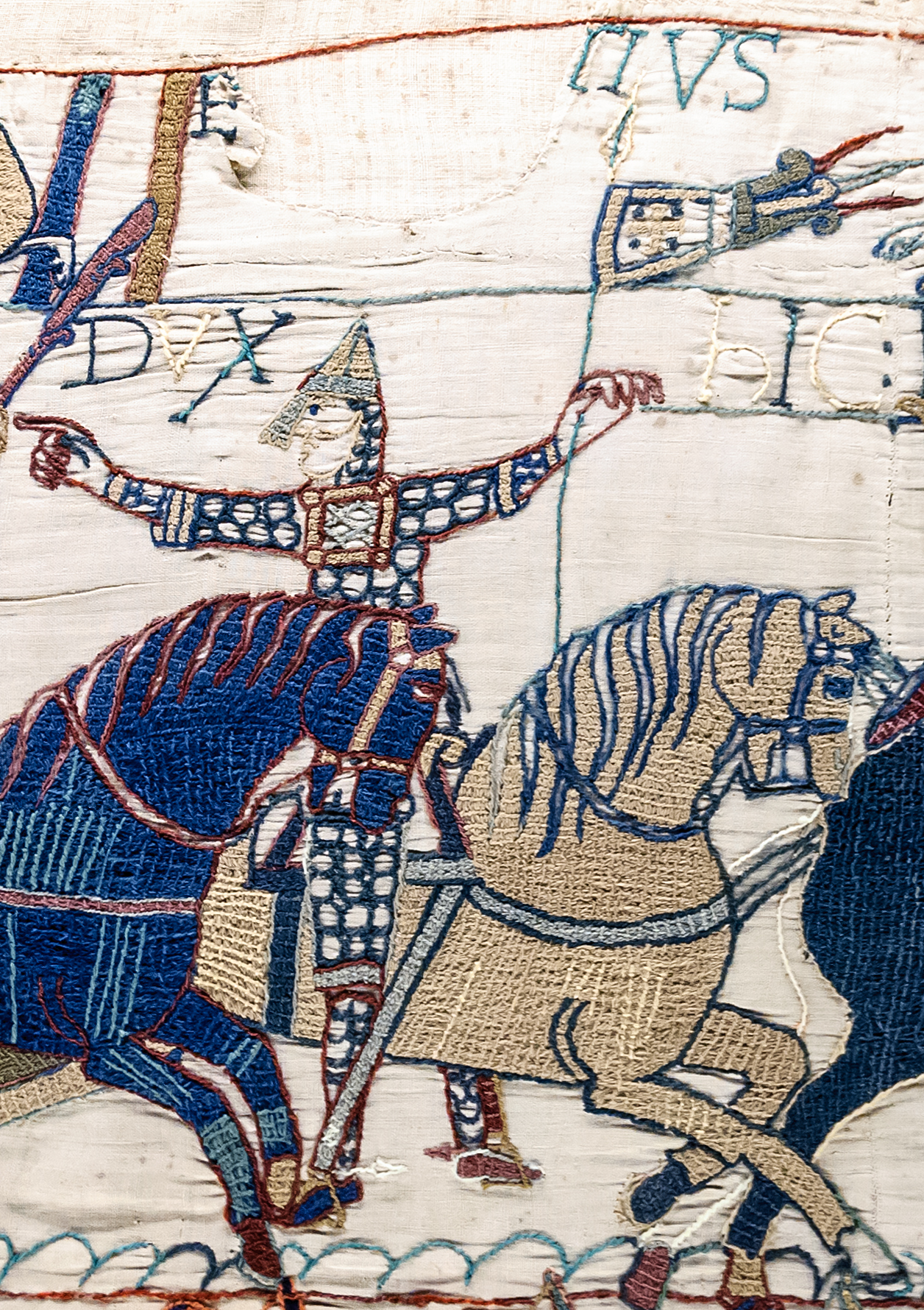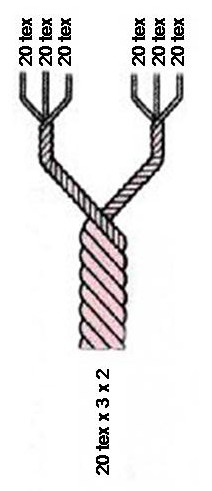|
Darning
Darning is a sewing technique for repairing holes or worn areas in textile, fabric or knitting using sewing needle, needle and sewing thread, thread alone. It is often done by hand, but using a sewing machine is also possible. Hand darning employs the darning stitch, a simple running stitch in which the thread is "woven" in rows along the Glossary of sewing terms#grain, grain of the fabric, with the stitcher reversing direction at the end of each row, and then filling in the framework thus created, as if weaving. Darning is a traditional method for repairing fabric damage or holes that do not run along a seam, and where patching is impractical or would create discomfort for the wearer, such as on the heel of a sock. Darning also refers to any of several needlework techniques that are worked using darning stitches: *Pattern darning is a type of embroidery that uses parallel (geometry), parallel rows of straight stitches of different lengths to create a geometric design. *Net da ... [...More Info...] [...Related Items...] OR: [Wikipedia] [Google] [Baidu] |
Glossary Of Sewing Terms
:''This glossary contains terms used in sewing, tailoring and related crafts. For terms used in the creation or manufacturing of textiles, including spinning, knitting, weaving, and individual fabrics and finishing processes, see Glossary of textile manufacturing. For terms used in dyeing, see Glossary of dyeing terms.'' Sewing is the craft of fastening or attaching objects using stitches made with needle and thread. Sewing is one of the oldest of the textile arts, arising in the Paleolithic Era. Although usually associated with clothing and household linens, sewing is used in a variety of crafts and industries, including shoemaking, upholstery, sailmaking, bookbinding and the manufacturing of some kinds of sporting goods. Sewing is the fundamental process underlying a variety of textile arts and crafts, including embroidery, tapestry, quilting, appliqué and patchwork. A B C D E F G ... [...More Info...] [...Related Items...] OR: [Wikipedia] [Google] [Baidu] |
Straight Stitch
The straight or running stitch is the basic stitch in hand-sewing and embroidery, on which all other forms of sewing are based. The stitch is worked by passing the needle in and out of the fabric at a regular distance. All other stitches are created by varying the straight stitch in length, spacing, and direction. Some sources only use the term straight stitch to refer to the individual stitch or its family of related stitches, while others use it interchangeably with or in place of running stitch. Running stitch will never be used to refer to a single stitch since a single running stitch is a straight stitch. Running stitches are most often not visible as they are used to close seams. Running stitch, Holbein or double-running stitch, satin stitch and darning stitch are all classed as straight or flat stitches. Backstitch is also sometimes included in this category.Enthoven, Jacqueline: ''The Creative Stitches of Embroidery'', Van Norstrand Rheinhold, 1964, , p. 29 ... [...More Info...] [...Related Items...] OR: [Wikipedia] [Google] [Baidu] |
Running Stitch
The straight or running stitch is the basic Stitch (textile arts), stitch in hand-sewing and embroidery, on which all other forms of sewing are based. The stitch is worked by passing the Sewing needle, needle in and out of the textile, fabric at a regular distance. All other stitches are created by varying the straight stitch in length, spacing, and direction. Some sources only use the term straight stitch to refer to the individual stitch or its family of related stitches, while others use it interchangeably with or in place of running stitch. Running stitch will never be used to refer to a single stitch since a single running stitch is a straight stitch. Running stitches are most often not visible as they are used to close Seam (sewing), seams. Running stitch, Holbein stitch, Holbein or double-running stitch, satin stitch and darning stitch are all classed as straight or flat stitches. Backstitch is also sometimes included in this category.Enthoven, Jacqueline: ''The ... [...More Info...] [...Related Items...] OR: [Wikipedia] [Google] [Baidu] |
Knitting
Knitting is a method for production of textile Knitted fabric, fabrics by interlacing yarn loops with loops of the same or other yarns. It is used to create many types of garments. Knitting may be done Hand knitting, by hand or Knitting machine, by machine. Knitting creates Stitch (textile arts), stitches: loops of yarn in a row; they can be either on straight flat needles or in ''the round'' on needles with (often times plastic) tubes connected to both ends of the Knitting needle, needles. There are usually many ''active stitches'' on the knitting needle at one time. Knitted fabric consists of a number of consecutive rows of connected loops that intermesh with the next and previous rows. As each row is formed, each newly created loop is pulled through one or more loops from the prior row and placed on the ''gaining needle so'' that the loops from the prior row can be pulled off the other needle without unraveling. Differences in yarn (varying in fibre type, Yarn weight, ''w ... [...More Info...] [...Related Items...] OR: [Wikipedia] [Google] [Baidu] |
Cypraea Tigris
''Cypraea tigris'', commonly known as the tiger cowrie, is a species of cowry, a large sea snail, a marine gastropod mollusk in the family Cypraeidae, the cowries. Taxonomy The tiger cowry was one of the many species originally described by Carl Linnaeus in his 1758 10th edition of ''Systema Naturae'', and the species still bears its original name of ''Cypraea tigris''. Its specific epithet ''tigris'' relates to its common name "tiger" (the shell however is spotted, not striped). This species is the type species of the genus '' Cypraea''. Subspecies and forms * ''Cypraea tigris'' form ''incana'' Sulliotti, G.R., 1924 * ''Cypraea tigris'' form ''lyncicrosa'' Steadman, W.R. & B.C. Cotton, 1943 * ''Cypraea tigris'' var. ''schilderiana '' Cate, C.N., 1961 The variety ''Cypraea tigris'' var. ''schilderiana'' was recognized by Cate in 1961. It differs from ''Cypraea tigris'' in its large size (10–13 cm) and the lack of a thick marginal callus. This variety is found in t ... [...More Info...] [...Related Items...] OR: [Wikipedia] [Google] [Baidu] |
Drawn Thread Work
Drawn thread work is one of the earliest forms of open work embroidery, and has been worked throughout Europe. Originally it was often used for ecclesiastical items and to ornament shrouds. It is a form of counted-thread embroidery based on removing threads from the warp and/or the weft of a piece of even-weave fabric. The remaining threads are grouped or bundled together into a variety of patterns. The more elaborate styles of drawn thread work use a variety of other stitches and techniques, but the drawn thread parts are their most distinctive element. It is also grouped with whitework embroidery because it was traditionally done in white thread on white fabric and is often combined with other whitework techniques. History Drawn thread embroidery is a very early form of open work embroidery, and is the basis of lace. Drawn thread work from the 12th century was known as Opus Tiratum and Punto Tirato from the Italian word tirare meaning to pull or draw . Forms of drawn thre ... [...More Info...] [...Related Items...] OR: [Wikipedia] [Google] [Baidu] |
Embroidery
Embroidery is the art of decorating Textile, fabric or other materials using a Sewing needle, needle to stitch Yarn, thread or yarn. It is one of the oldest forms of Textile arts, textile art, with origins dating back thousands of years across various cultures. Common Embroidery stitch, stitches found in early embroidery include the chain stitch, Buttonhole stitch, buttonhole or blanket stitch, running stitch, satin stitch, and cross stitch. Modern embroidery continutes to utilize traditional techniques, though many contemporary stitches are exclusive to machine embroidery. Embroidery is commonly used to embellish accessories and garments is usually seen on quilts, clothing, and accessories. In addition to thread, embroidery may incorporate materials such as Pearl, pearls, Bead, beads, Quill, quills, and Sequin, sequins to highlight texture and design. Today, embroidery serves both decorative and functional purposes and is utilized in fashion expression, cultural identity, and ... [...More Info...] [...Related Items...] OR: [Wikipedia] [Google] [Baidu] |
Filet Lace
Filet lace is the general word used for all the different techniques of embroidery on knotted net (or in French broderie sur filet noué). It is a hand made needlework created by weaving or embroidery Embroidery is the art of decorating Textile, fabric or other materials using a Sewing needle, needle to stitch Yarn, thread or yarn. It is one of the oldest forms of Textile arts, textile art, with origins dating back thousands of years across ... using a long blunt needle and a thread on a ground of knotted net lace or filet work made of square or diagonal meshes of the same sizes or of different sizes. Lacis uses the same technique but is made on a ground of leno (a woven fabric) or small canvas (not a knotted lace), and the style known as Buratto is similarly on woven and not knotted foundations. History Filet lace is a form of decorative netting and as such can be presumed to have derived at some point from the fishnet that a community would require for fishing, huntin ... [...More Info...] [...Related Items...] OR: [Wikipedia] [Google] [Baidu] |
Lace
Lace is a delicate fabric made of yarn or thread in an open weblike pattern, made by machine or by hand. Generally, lace is split into two main categories, needlelace and bobbin lace, although there are other types of lace, such as knitted or crocheted lace. Other laces such as these are considered as a category of their specific craft. Knitted lace, therefore, is an example of knitting. This article considers both needle lace and bobbin lace. While some experts say both needle lace and bobbin lace began in Italy in the late 1500s, there are some questions regarding its origins. Originally linen, silk, gold, or silver threads were used. Now lace is often made with cotton thread, although linen and silk threads are still available. Manufactured lace may be made of synthetic fiber. A few modern artists make lace with a fine copper or silver wire instead of thread. Etymology The word lace is from Middle English, from Old French ''las'', noose, string, from Vulgar Latin">-4; ... [...More Info...] [...Related Items...] OR: [Wikipedia] [Google] [Baidu] |
Spool Knitting
Spool knitting, loom knitting, corking, French knitting, or tomboy knitting is a form of knitting that uses a spool with a number of nails or pegs around the rim to produce a tube or sheet of fabric. The spool knitting devices are called knitting spools, knitting nancys, knitting frame, knitting loom, or French knitters. The technique is to wrap the yarn around all of the spool's pegs, twice. The lower loop of yarn is then lifted over the upper loop and off the peg, thereby creating stitches. The yarn is then wrapped around the entire loom, creating a new upper yarn on each peg. This process is repeated until the project is complete. Spool knitting frames typically have four or five pegs (or brass nails), although the number can range to more than 100. Though not exclusively, the term "loom knitting" often refers to frames with more than those four or five pegs. Uses Many things can be made from the resulting tube. For example, it can be wound in a spiral to produce a mat or ... [...More Info...] [...Related Items...] OR: [Wikipedia] [Google] [Baidu] |
Threadcount
Textile fibers, threads, yarns and fabrics are measured in a multiplicity of units. * A fiber, a single filament of natural material, such as cotton, linen or wool, or artificial material such as nylon, polyester, metal or mineral fiber, or human-made cellulosic fibre like viscose, Modal, Lyocell or other rayon fiber is measured in terms of linear mass density, the weight of a given length of fiber. Various units are used to refer to the measurement of a fiber, such as: the denier and tex (linear mass density of fibers), super S (fineness of wool fiber), worsted count, woolen count, linen count (wet spun) (or Number English (Ne)), cotton count (or Number English (Ne)), Number metric (Nm) and yield (the reciprocal of denier and tex). * A yarn, a spun agglomeration of fibers used for knitting, weaving or sewing, is measured in terms of cotton count and yarn density. * Thread, usually consisting of multiple yarns plied together producing a long, thin strand used in sewing or w ... [...More Info...] [...Related Items...] OR: [Wikipedia] [Google] [Baidu] |
Shed (weaving)
In weaving, the shed is the temporary separation between upper and lower warp yarns through which the weft is woven. The shed is created to make it easy to interlace the weft into the warp and thus create woven fabric. Most types of looms have some sort of device which separates some of the warp threads from the others. This separation is called the shed, and allows for a shuttle carrying the weft thread to move through the shed perpendicular to the warp threads. Which threads are raised and which are lowered are changed after each pass of the shuttle. The process of weaving can be simplified to a series of four steps: the shed is raised, the shuttle is passed through, the shed is closed, and the weft thread is beaten into place. These steps are then repeated, with a different set of threads being raised so as to interlace the warp and weft. The term ''shedding'' refers to the action of creating a shed. A ''shedding device'' is the device used to raise or open the shed. Cr ... [...More Info...] [...Related Items...] OR: [Wikipedia] [Google] [Baidu] |








